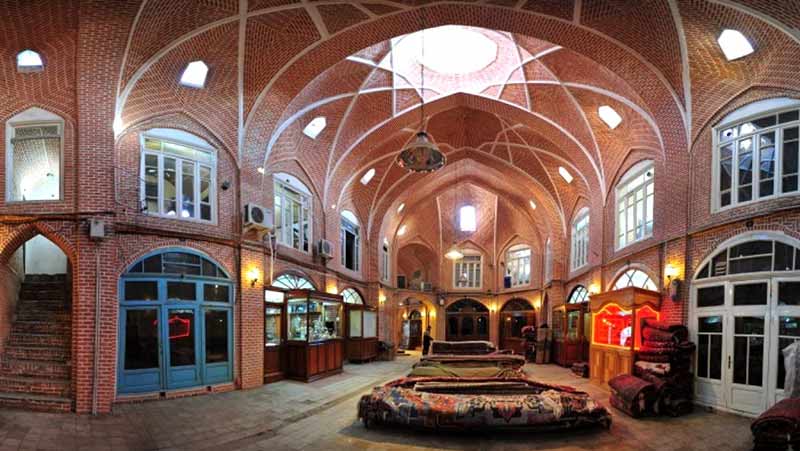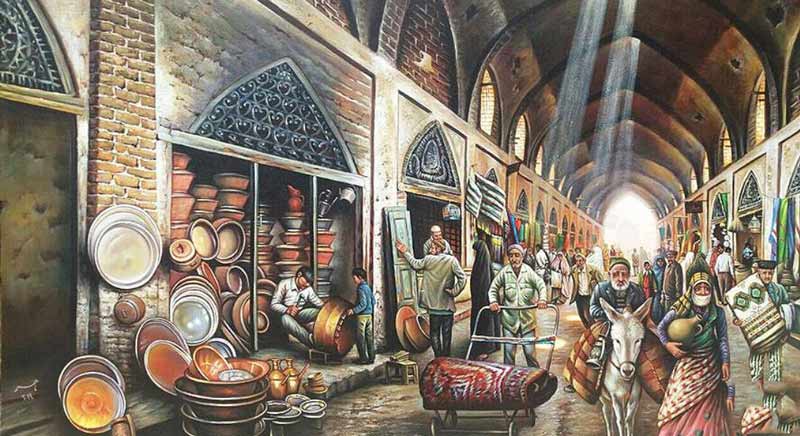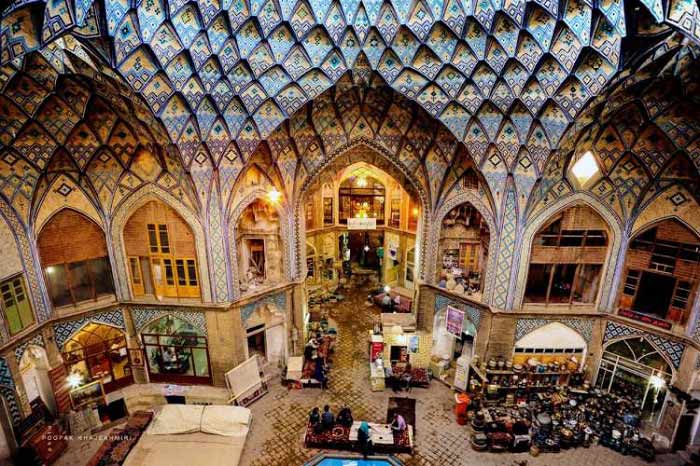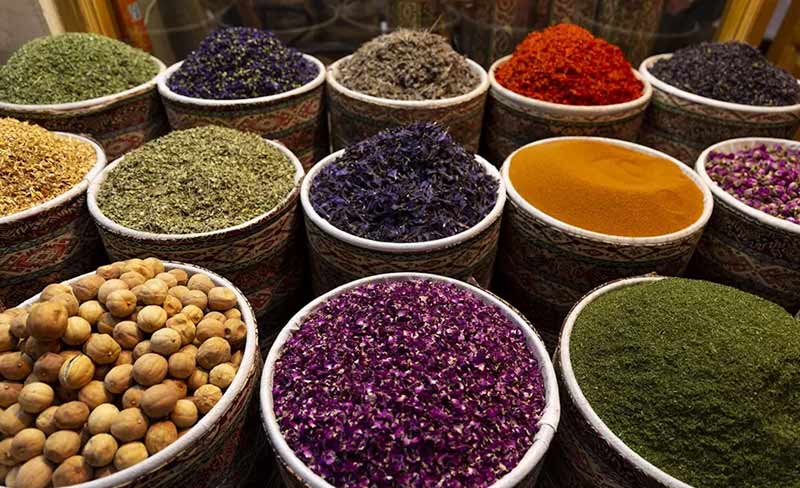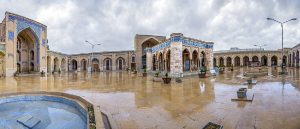Are you ready to embark on a journey through time and culture? Look no further than the Bazaar of Tabriz, one of the oldest and largest covered bazaars in the world, located in the historic city of Tabriz in northwestern Iran. With a history dating back to the 13th century, the bazaar has played an influential role in the city’s economy and culture for centuries. It remains a lively hub of commerce and tourism these days.
But what makes the Bazaar of Tabriz truly special is the rich cultural traditions, architecture, and social dynamics that have evolved there. The centuries of trade and commerce shaped the bazaar’s layout and design and myriads of events and traditions have taken place within its passages and courtyards so, the bazaar is a living legacy of Iranian heritage where you can experience the magic it.
To visit the Grand Bazaar of Tabriz, don’t hesitate to look into our Iran World Heritage Tour.
History of the Grand Bazaar of Tabriz
The origins of Tabriz Bazaar remain uncertain, although some suggest that it dates back to the 13th century when the city served as the capital of the Ilkhanate dynasty. Throughout its history, many renowned travelers, including Marco Polo, Ibn Battuta, Yaqut al-Hamawi, Gaspar Drouville, Jean Chardin, and Hamdallah Mostofi, have visited the bazaar and praised its splendor. Their accounts provide valuable insights into Tabriz Bazaar’s development from the 10th century AD.
Initially, the bazaar of Tabriz started out as a small market, but it gradually grew in size and importance over time. However, it was during the Safavid era in the 16th century that the bazaar truly blossomed into a major trading hub for silk, spices, and a wide array of goods. This prosperity continued under subsequent rulers, with the bazaar undergoing several renovations and expansions throughout the centuries. However, the most significant transformation occurred during the Qajar era in the 19th century, when many of the bazaar’s current structures were erected. These included the impressive brick domes and arches that still adorn the bazaar to this day, and which are a testament to the skill of Iranian architects and builders of the time. Despite the many changes the bazaar has undergone, it remains a thriving commercial center and a beloved cultural landmark in Tabriz, attracting visitors from near and far.
Architecture and Layout
The Bazaar of Tabriz covers an area of over 1 square kilometer and comprises a network of interconnected covered passages, courtyards, and shops. The bazaar is organized into several sections, each specializing in different types of goods, such as carpets, textiles, jewelry, and spices.
The bazaar’s architecture is a testament to the skill and ingenuity of its builders. The brick domes and arches that adorn the bazaar’s ceilings are not only aesthetically impressive but also serve a practical purpose, providing natural ventilation and lighting. The bazaar also features a number of historic caravanserais, or traveler’s inns, which provided lodging and storage for traders and their goods.
Bazaar of Tabriz – A UNESCO world heritage
UNESCO recognizes the exceptional universal value of Bazaar of Tabriz and added it to its World Heritage list in 2010 to ensure its protection and preservation for future generations. Here are some of the reasons why:
- The bazaar is an exceptional example of a traditional commercial and cultural system that has maintained its continuity over centuries and has adapted to changing conditions.
- The bazaar is an outstanding testimony to the development of Persian architecture and urban planning.
- The complex includes a variety of structures such as shops, caravanserais, mosques, and schools built over different periods, reflecting the diverse cultural and architectural influences that have shaped the region over time.
- The bazaar is a unique example of the fusion of different elements of the city’s cultural and social life, including trade, religion, and education.
- The bazaar is associated with significant historical events and personalities, such as the Silk Road trade, the Safavid dynasty, and the Qajar dynasty. It has also been a site of political and social activities, including protests and demonstrations.
When to visit Bazaar of Tabriz?
Spring (March to May) and autumn (September to November) are generally considered the best times to visit Tabriz Bazaar. The summer months (June to August) can be hot, with temperatures often exceeding 30°C (86°F). And the winter months (December to February) can be very cold, with temperatures sometimes dropping below freezing.
It’s also worth noting that the Bazaar of Tabriz is closed on Fridays and national holidays, so it’s a good idea to check with us before planning your visit.
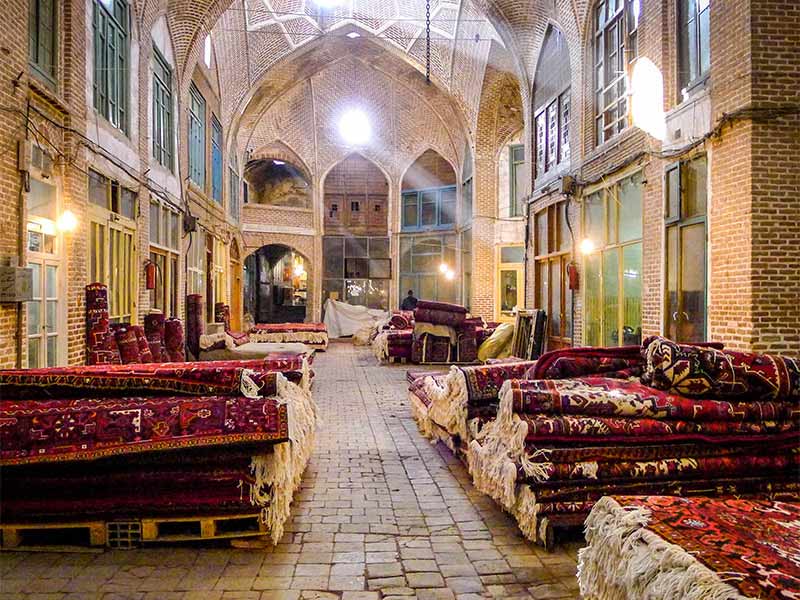
Where is the Bazaar of Tabriz located?
The Bazaar of Tabriz is located in the historic center of Tabriz, which is the capital of the East Azerbaijan Province in northwestern Iran.
What to visit in Iran after Bazaar of Tabriz?
We have included Bazaar of Tabriz in Iran World Heritage Tour. This package offers a unique opportunity to explore the rich cultural and historical heritage of the region, including the stunning World Heritage monuments. Our tour packages offer a comprehensive and immersive experience of Iran’s diverse culture, architecture and nature at reasonable rates.
If you’re interested in exploring more of Iran’s cultural and historical treasures, there are many other destinations worth visiting. Here are a few suggestions:
The Armenian Monastic Ensembles: Located not far from Tabriz, the ensembles consist of three separate sites: Saint Thaddeus Monastery, Saint Stepanos Monastery, and the Chapel of Dzordzor.
Ardabil: Being about 200 kilometers east of Tabriz, Ardabil is home to the UNESCO-listed Sheikh Safi al-Din Khanegah and Shrine Ensemble. If you are interested in natural landscapes, you may want to consider visiting Sabalan Mountain to have a nice trek there or use the mineral spas in Sarein.
Zanjan: This city is known for Soltaniyeh Dome, its beautiful bazaar and handicrafts.
Uramanat: Located near the borders with Iraq this region with its beautiful natural scenery is a UNESCO world heritage region in Iran.
Hamadan: Being about 300 kilometers south of Tabriz is home to the Avicenna Mausoleum, the Hegmataneh Hill, and the Ganjnameh Inscriptions.
Sahand Ski Resort: To do winter sports travel about 30 kilometers from Tabriz to the slopes of Mount Sahand, which is one of the highest peaks in the region.
Shiraz: Located in the southern province of Fars, Shiraz is known for its beautiful gardens, historic mosques, and vibrant bazaars. Highlights include the gardens of Eram and Narenjestan, the Vakil Mosque, and the Nasir al-Mulk Mosque.
Tehran: The capital city of Iran is a vibrant metropolis with many cultural and historical attractions, including the National Museum of Iran, and the Golestan Palace.
Let us know your experiences of visiting or your questions about the Bazaar of Tabriz in the comment box below, we will be happy to hear from you!


